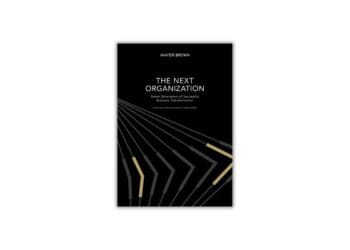With regulations domestically and abroad changing constantly, the risk of noncompliance is ever present. Fenergo’s Rachel Woolley discusses how this will impact functions beyond compliance.
Regulatory activity has been ramping up recently, and it doesn’t look to be slowing down in 2019. In an era of hyper-regulatory scrutiny, financial institutions find themselves in a constant battle between impending regulatory deadlines and the risk of noncompliance. Add to this the complexity of cross-jurisdictional regulations that vary across different countries even within the same region. The Asia-Pacific region is a prime example; with over 40 regulators in the same region, each with slightly varied rules and requirements, adhering to cross-border regulatory requirements is extremely challenging.
But it’s not just the compliance teams who are affected. As the challenge of regulatory change management increases, divisions and activities beyond the compliance function may potentially be impacted, including data management, operations, client-facing teams, client experience and time-to-revenue. The process needs to be managed and measured methodically in order to manage wide-ranging regulatory change in line with available budgets and resources.
The Hidden Cost of Compliance
The increased pressure to satisfy regulatory compliance obligations
with reduced budgets and significant resource constraints proves to be an
unrelenting challenge for financial institutions. Unfortunately, the financial
and operational impact is often at the expense of the client experience.
Financial institutions have traditionally responded to this challenge by adding
more bodies to remediate and collect information, driving up the overall cost
of compliance. This is a trend
we are continuing to see in response to recent AML failures.
Furthermore, the area of client outreach is a particularly thorny issue in terms of client experience, as outreach teams are often hindered by the inability to locate existing client information internally. As a result, client outreach and remediation exercises are conducted to collect information that clients have probably submitted numerous times already. Not only does this create a burdensome, operational nightmare for the financial institution, it also creates unnecessary friction in the client’s banking experience. A recent report showed that 81 percent of banks agree that gathering and managing increasing volumes of client data lengthens the compliance and onboarding processes, negatively affecting customer experience. The same report highlighted that a mere 15 percent of banks had fully automated the collection of client data and documentation.
A little bit like death and taxes, regulatory change and its evolution is a certainty; therefore, financial institutions need to find a way to manage it on an ongoing basis as a business-as-usual activity. Ultimately, best practice regulatory change management is not about developing siloed solutions for each individual regulation, but rather a holistic regulatory solution that can adapt to changing regulatory requirements over time. When it comes to regulatory change management, here are three ways to make this process a seamless, business-as-usual activity:
1. Compliance as a Community
Despite every financial institution in the world striving to manage regulatory change, this is a process that can be quite industry siloed, with each bank undertaking their own strategy and approach to achieve an efficient and effective regulatory change management process. It’s important to consider that regulatory change management is noncompetitive, and a community-based approach can help drive industry best practices for solving regulatory compliance challenges. By leveraging the collective regulatory know-how, expertise and organizational resources of each firm to provide a solid source of regulatory news, updates and a feedback loop for in-flight regulatory progress, financial institutions can manage the process in an efficient manner and work together in developing best practice approaches to upcoming regulations.
2. Keeping Track of Regulatory Change – Creating the Regulatory Roadmap
Financial institutions are inundated with regulatory news, updates, commentary and debate from a multitude of sources, which creates a lot of garbled noise. Financial institutions are trying to decode and extract useful information but are often distracted by the onslaught of information. What they need is a trusted source of structured information that enhances accurate regulatory interpretation and assessment of impact to the organization. In this way, the organization will be tuned to translate this information into risk- and evidence-based actions.
3. Developing a Regulatory Framework
It’s useful to take a step back and assess the two primary goals of regulatory change management solutions:
- Ensuring compliance – This is about ensuring the correct processes are in place and the prescribed data and documentation requirements are met.
- Facilitating compliance across the organization – For example, an onboarding tool may also capture specific tax information around FATCA (Foreign Account Tax Compliance Act) and CRS (Common Reporting Standard). This is relevant to ensure compliance during the initial onboarding process, but also to facilitate the tax reporting obligations the financial institution is subject to, along with ongoing compliance obligations throughout the client life cycle.
Regulatory change is a difficult challenge for financial institutions across the globe. With limited IT budgets and tight regulatory deadlines, financial institutions have to develop solutions that do not create additional problems within their organization. As we move ahead, it’s clear that financial institutions will continue to operate in an ever-changing and increasingly demanding regulatory environment. Although the pace of regulatory reform has slowed in Europe and the U.S., geopolitical factors, such as Brexit, combined with new regulatory priorities and ongoing supervision will increase the regulatory burden on global organizations. In the Asia-Pacific region, regulators continue to push forward with the implementation of already agreed-upon international reforms.
Ensuring compliance with upcoming regulatory requirements and expectations will be challenging for global firms in 2019, although this is certainly not a new state of affairs. In designing suitable approaches and frameworks for managing regulatory risk, financial institutions must consider the principles of organization and collaboration. It’s imperative to have a structured approach when developing regulatory solutions (e.g. why is it being applied, what are the component parts of those regulations and how is it going to fit into your wider solution framework?). Equally, collaborating with industry peers in terms of knowledge-sharing and regulatory monitoring can greatly assist in the success of strategic regulatory change management solutions within financial institutions.



 Rachel Woolley, Global AML Manager at
Rachel Woolley, Global AML Manager at 








